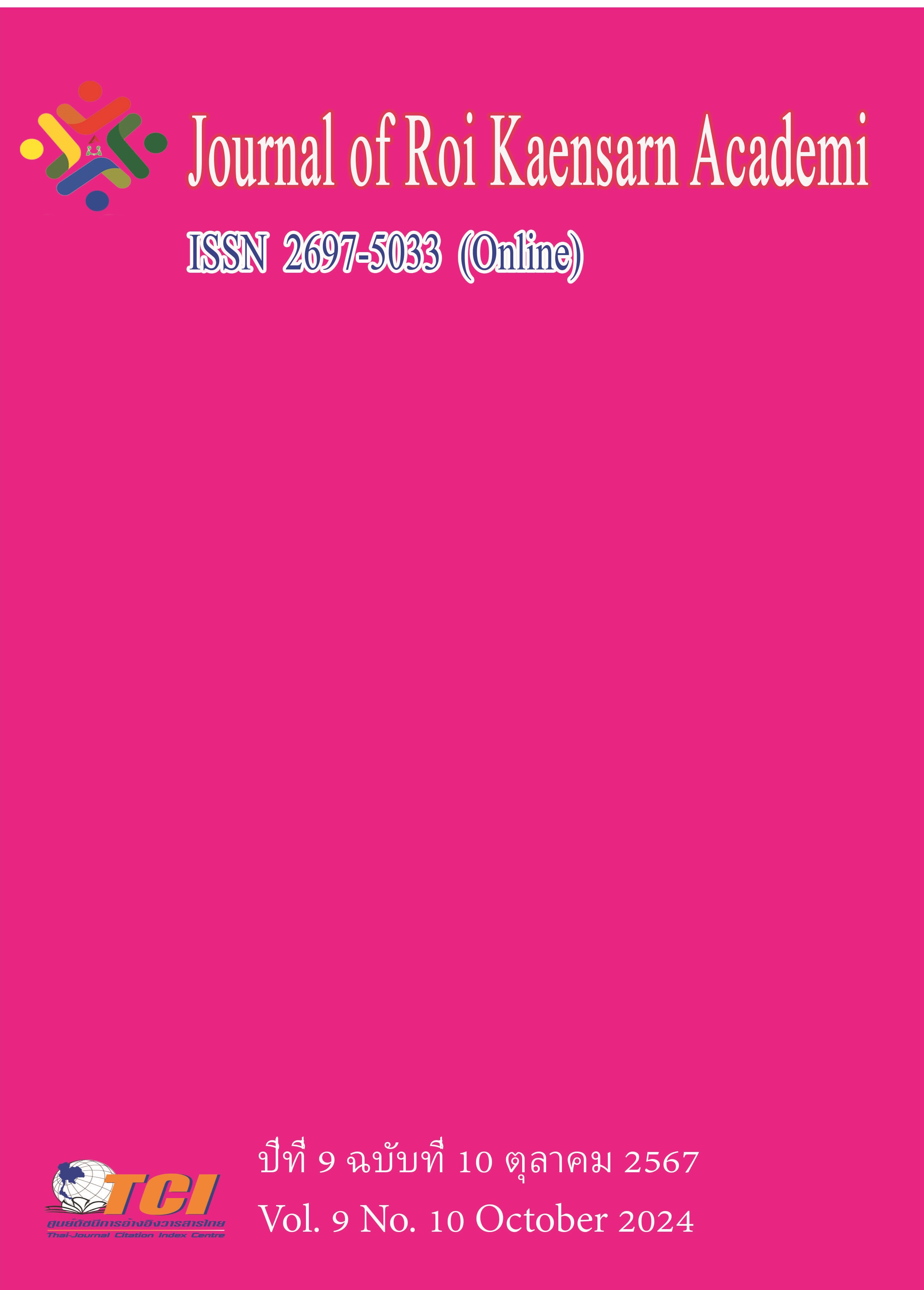The Design of Practice on Wicker Intangible Cultural Heritage Skills in Public Art Based on Sustainable Design Concepts
Main Article Content
บทคัดย่อ
The rapid development of China's urbanization process has, on the one hand, caused the intangible cultural heritage wicker weaving skills to face difficulties in the protection and inheritance, and on the other hand, promoted the vigorous development of urban public art. This study attempts to intervene the traditional willow weaving skills into the field of public art, and promote the inheritance and development of willow weaving skills in the city through the integration and innovation of willow weaving traditional skills in public art. The research goal: Based on sustainable design theory, demonstrate the practical creation of traditional willow weaving skills in public art in first-tier cities in Shanghai. First, based on literature research, fieldwork on intangible cultural heritage wicker weaving, and in-depth interviews with young users in Shanghai, the research results on the four sustainability dimensions of culture, environment, economy, and society were sorted out. The focus is on analyzing and discussing the attitudes and evaluations of young users in Shanghai on the four dimensions; Secondly, the "Magic City Rubik's Cube" - a wicker public art concept plan was designed and created, and the work was specifically displayed from the four dimensions of cultural sustainability, environmental sustainability, social sustainability, and economic sustainability ;The final research results show that young users in Shanghai pay more attention to the cultural sustainability of wicker public art, hold a positive attitude towards environmental sustainability throughout the life cycle of LCA, and are more willing to accept innovative applications of new technologies and new materials in wicker public art. Research contribution: For the first time, the creative process of traditional willow weaving skills in public art is demonstrated, providing an important reference for the sustainable innovation of intangible heritage traditional skills in the field of public space.
Article Details
เอกสารอ้างอิง
Chen, Y., Ma, X., & Teng, C. (2013). Research on the sustainable development of cultural industry competitiveness [J]. Theory and Reform, 2013 (06), 131-133.
Ceschin, F., & Gaziulusoy, I. (2016). Evolution of design for sustainability: From product design to design for system innovations and transitions. Design Studies, 118-163.
Chen, X. (2020). Research on the development of contemporary willow weaving technology in China (Master’s thesis, Nanjing Normal University), 30-85
Chen, X., & Yang, S. (2022). Research on sustainable design strategies for culturally creative products from the perspective of cultural consumption. Packaging Engineering. (14), 320-325.
Chang, Y. (2012). Analysis of the Impact of Consumer Behavior on Social Network Service (SNS) Business Model (Master's Thesis, Shaanxi Normal University. 50-78.
Jiang, Z., & Ji, T. (2021). Research on Consumer Portrait Construction of Cultural and Creative Products Based on Purchase Behavior. Packaging Engineering. (20), 218-224+251.
Hila, S., Adela, K., & Meret, N. (2016). The integration of Design Thinking and Strategic Sustainable Development [J]. Journal of Cleaner Production.
Hapuwatte, B. M., & Jawahir, I. S. (2021). Closed ‐ loop sustainable product design for circular economy. Journal of Industrial Ecology (6).
Li, Q., Li, X., & Yao, Y. (2021). Research and practice on the redesign of waste leather based on brand culture construction. Beijing Leather. (12), 48-53.
Li, H. (2022). Research on online marketing strategies based on "new consumer" group portraits. Business Economics Research. (06), 82-86.
Liu, S., & Wan, J. (2020). Analysis of young people’s over-consumption problem from the perspective of behavioral economics. National Circulation Economy. (02), 13-14.
Liu, P., & She, C. (2021). Research on factors influencing the consumption experience of young groups in the new retail environment. Small and medium-sized enterprise management and technology (mid-term issue). (12), 170-172.
Liu, W.(2019). A Brief Discussion on Public Art and Development History. Journal of Shandong Agricultural Engineering College, 66-67.
Sun, C., Yang, H., & Ren, Y. (2019). Research on the inheritance and design of Funan willow weaving from the perspective of intangible cultural heritage [J]. Art Education Research, 2019 (24), 27-28.
Sun, X. (2021). Research on the evolving characteristics of public art from the perspective of new media art. Art and Design (Theory) (12), 2021.12.026. 99-101.
Sun, J. (2014). Research on interactivity of public art in urban subways (Master's thesis, Suzhou University), 40-67.
Sun, N. (2019). Research on sustainable design of Huaihe willow weaving based on the whole life cycle [J]. Journal of Changchun University, 109-112.
Sun, N.; He, Y.; Wang, C.; Zhang, J. (2023). Research on Sustainable Design of Consumers’ Influence Factors of Huaihe Willow Weaving Based on AHP. Sustainability, 15, 1-27.
Sang, J., Guo, L., & Sun, Z. (2021). Exploring the "national trend" style in the modern service industry. Cooperative Economy and Technology. (07), 78-80.
Tang, X., Zheng, X., Zhong, Q., Chen, J., & Su, Y. (2023). Research on the sustainable design and dissemination of lion dance cultural IP from the perspective of digital twins. Packaging Engineering. (14), 436-449.
WWF. (2018). Global Footprint Network. Has Humanity’s Ecological Footprint Reached Its Peak. 2018. Available online. https://www.footprintnetwork.org (accessed on 9 April 2018).
Wang, Y. K. & Guo, J. X. (2016). The relationship between economy and environment in sustainable development. Sci. Technol. Innov. Appl. 177, 48–49.
Yu, D., & Wang, Y. (2016). Sustainable innovation and design strategies driven by social value. Journal of Nanjing University of the Arts (Art and Design). (02), 171-176.
Zhou, X. (2013). Research on the overall design of public art from the perspective of urban culture (Ph.D. thesis, Wuhan University), 35-90.
Zhao, X., & Zhang, L. (2022). Research on strategies for cultural sustainable design. Design (15), 92-96.
Zeng, C. (2021). Research on the cultural heritage excavation and sustainable design of traditional villages in Guangfu - taking Lebei Village as an example. Chinese Ethnic Art. (02), 10-14.
Zhang, Y., An, S., & Liu, W. (2016). Research on the attitudes of young consumer groups towards green measures in eco-hotels. Journal of Guizhou Normal University. (08), pp. 45-52.

